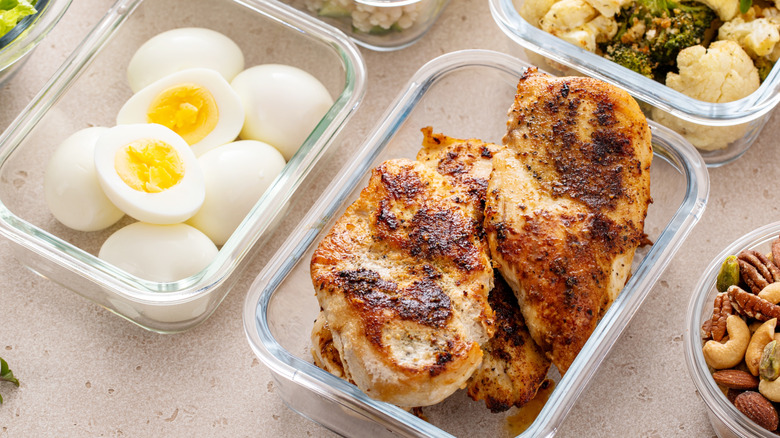Chicken Vs Eggs: Which Has More Protein?
Protein plays an important role in the body. It's a fundamental macronutrient involved in nearly every biological process: It helps build muscle, repairs damaged tissue, fuels metabolic functions, and supports immune health. When it comes to protein powerhouses, chicken and eggs often go head-to-head. Both are well-known for their rich nutrient profiles, affordability, wide availability, and versatility in the kitchen. But when it comes down to the numbers, which one actually delivers more of the macronutrient?
The clear winner is chicken. Per 100 grams, a raw skinless chicken breast contains approximately 22.5 grams of protein, while the same amount of eggs offers only 12.4 grams. If you're aiming to meet high protein goals — whether for muscle growth, workout recovery, or simply as part of your preferred diet — chicken is a reliable go-to. That said, don't discount eggs. Considering their small size, they still provide plenty of protein, along with other essential vitamins and nutrients such as vitamin D, B12, and healthy fats. Eggs remain a nutrient-rich choice, but in terms of sheer protein per gram, chicken takes the crown.
What parts of the chicken are highest in protein?
Chicken is one of the most protein-dense meats available, but not all parts are created equal. If you're looking to optimize your intake, knowing the differences between chicken cuts can make a big difference.
For maximum protein, choose chicken breast. Per 100 grams, a cooked, skinless chicken breast contains approximately 32.1 grams of protein. This makes it one of the most efficient protein sources, but if you really want to boost its macronutrient content and flavor, try a yogurt marinade for the juiciest chicken. Whether baked, pan-fried, or grilled, this cut is a versatile favorite that delivers on both taste and protein goals.
Chicken thighs also pack a protein punch. Skin-on, bone-in thighs contain around 18 grams of protein per 100 grams. While lower in protein than the breast, thighs are higher in fat, which makes them juicier and more tender. When cooked with the skin on and bones in, chicken thighs offer a rich, savory depth that's hard to beat. They shine in dishes like Thai curry, where their flavor can truly stand out.
How to level up the protein of your eggs
Eggs are already a delicious staple, but you can still maximize their protein contribution depending on how you cook them and what you pair them with. One way to boost the protein content is by adjusting the egg-to-egg-white ratio. A large egg contains around 6.3 grams of protein, but only 2.7 grams come from the yolk — the rest is in the whites. So, when making scrambled eggs or an omelet, mix in extra whites. Luckily, there are plenty of foolproof ways to separate eggs — use a slotted spoon or even a clean plastic water bottle if you don't want to get your hands dirty.
Eggs shine even brighter when paired with complementary, high-protein ingredients that enhance their natural flavor. Cooking methods such as scrambling, baking, and steaming work well for combining eggs with other protein sources. Try making a rosemary and olive frittata, and increase its nutritional value by adding cottage cheese or Greek yogurt. You can also incorporate hearty legumes such as black beans or lentils for an extra protein boost, plus the added benefit of fiber.



